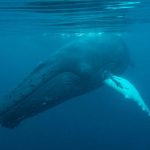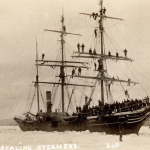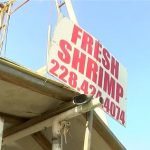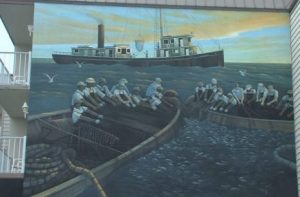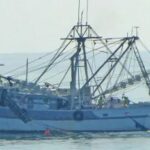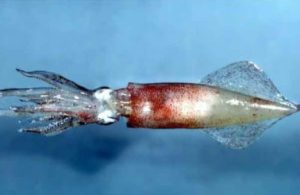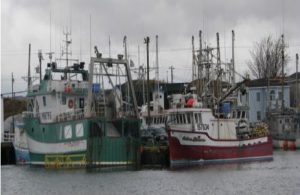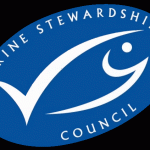Tag Archives: water temperature.
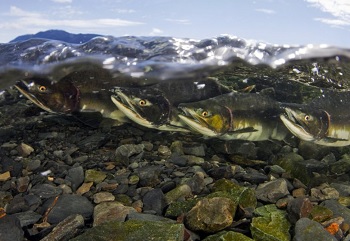
Bristol Bay Salmon Are in Hot Water
I’ve worked as both a journalist and a commercial fisherman for over a decade, participating in more than a dozen fisheries from Southern California to the western Gulf of Alaska. I’ve seen booms and busts over the years, and this summer the fishing in Bristol Bay was booming. Estimates say 56.3 million salmon returned to the bay’s rivers. While down from 2018’s record-breaking runs, with 62.3 million fish, Bristol Bay has so far bucked the trend of declining salmon runs seen in other regions. But all is not well. by Nick Rahaim >click to read< 09:43

Nova Scotia: Nervous days for the lobster fleet
A pair of websites perpetually run on the computer of Stewart Lamont, managing director of Pleasant Harbour’s Tangier Lobster Co., who had a lot on his mind when I called Tuesday. Environment Canada, naturally, is one of the sites he constantly monitors. Lately the offshore winds, which, if overly strong, could disrupt the provincial lobster fishery that opened on Dec. 2, have been relatively tame. The issue, he explained over the telephone, is water temperature. At the critical mid-shore distance, five or six hours from land, the water Tuesday was less than 4 C, which he calls “an almost unfathomable drop” from around 11 C a year ago. >click to read<10:16

Biologists expect early 2018 Togiak herring run
This year, Togiak could see one of the earliest herring harvests ever recorded. “We’re going to fly our first survey on Friday. And then I expect we’ll be seeing herring by [April] 20th, if not sooner,” said Alaska Department of Fish and Game area biologist Tim Sands. That would be the Togiak fishery’s second-earliest start on record. The earliest recorded date a biomass was spotted in the district was April 14, 2016. But because of the unusual timing, fishing only began three days later. Herring spawn timing depends largely on water temperature >click to read<16:06
Lobstermen plagued by low catch, low prices
 As the shedder, or soft shell, season winds down with higher value hard shell lobsters on the horizon, local lobstermen are hoping to turn what has so far been a dismal season around. Lobsters are in hiding, or so it seems to lobstermen. “I’d say we’ve caught about half the lobsters [than in recent years],” Stonington lobsterman Tony Bray said of the 2017 season. The Stonington Lobster Co-op, which buys a large proportion of the local catch, reported a 25 to 30 percent drop in volume over last year. “The lobsters are out there, so this is not likely reflective of a resource decline,” said Maine Center for Coastal Fisheries scientist Carla Guenther, who follows Department of Marine Resources data monitoring. “It may be reflective of a habitat shift as to where the lobsters are, and a behavior shift as a reaction to the colder water.” click here to read the story 15:16
As the shedder, or soft shell, season winds down with higher value hard shell lobsters on the horizon, local lobstermen are hoping to turn what has so far been a dismal season around. Lobsters are in hiding, or so it seems to lobstermen. “I’d say we’ve caught about half the lobsters [than in recent years],” Stonington lobsterman Tony Bray said of the 2017 season. The Stonington Lobster Co-op, which buys a large proportion of the local catch, reported a 25 to 30 percent drop in volume over last year. “The lobsters are out there, so this is not likely reflective of a resource decline,” said Maine Center for Coastal Fisheries scientist Carla Guenther, who follows Department of Marine Resources data monitoring. “It may be reflective of a habitat shift as to where the lobsters are, and a behavior shift as a reaction to the colder water.” click here to read the story 15:16
Warmer Gulf of Maine clobbering the cod
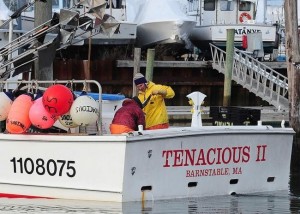 Desperate measures have been taken, cod quotas have been slashed again and again, and yet fish numbers continue to slide. Now, a new study by the Gulf of Maine Research Institute suggest the Gulf’s warming waters have led to the collapse of the fishery and recovery depends “as much on temperature as it does on fishing.”,, But if is the prime culprit, not over zealous fishermen, what more can be done on a local level? Andrew Pershing, “Our work suggests that had temperature been factored in,,,” Read the article here 09:18
Desperate measures have been taken, cod quotas have been slashed again and again, and yet fish numbers continue to slide. Now, a new study by the Gulf of Maine Research Institute suggest the Gulf’s warming waters have led to the collapse of the fishery and recovery depends “as much on temperature as it does on fishing.”,, But if is the prime culprit, not over zealous fishermen, what more can be done on a local level? Andrew Pershing, “Our work suggests that had temperature been factored in,,,” Read the article here 09:18
Gulf Stream ring water intrudes onto continental shelf like ‘Pinocchio’s nose’
 Ocean robots installed off the coast of Massachusetts have helped scientists understand a previously unknown process by which warm Gulf Stream water and colder waters of the continental shelf exchange. The process occurs when offshore waters, originating in the tropics, intrude onto the Mid-Atlantic Bight shelf and meet the waters originating in regions near the Arctic. This process can greatly affect shelf circulation, biogeochemistry and fisheries. “I showed the glider data to a group of commercial fisherman back in April, in Rhode Island, and they were very surprised,” Read the rest here 11:05
Ocean robots installed off the coast of Massachusetts have helped scientists understand a previously unknown process by which warm Gulf Stream water and colder waters of the continental shelf exchange. The process occurs when offshore waters, originating in the tropics, intrude onto the Mid-Atlantic Bight shelf and meet the waters originating in regions near the Arctic. This process can greatly affect shelf circulation, biogeochemistry and fisheries. “I showed the glider data to a group of commercial fisherman back in April, in Rhode Island, and they were very surprised,” Read the rest here 11:05
Butterfish—Little Fish Big Science
 For this assessment, scientists developed a new method for estimating fish abundance that takes changing environmental conditions into account, something that will become increasingly important as the climate changes and the oceans warm.,,, Much of that uncertainty was caused by the fact that butterfish shift their distribution in response to changing bottom water temperatures.,, The breakthrough came when scientists devised a way to account for the effect of bottom water temperature,,, Read the rest here 11:09
For this assessment, scientists developed a new method for estimating fish abundance that takes changing environmental conditions into account, something that will become increasingly important as the climate changes and the oceans warm.,,, Much of that uncertainty was caused by the fact that butterfish shift their distribution in response to changing bottom water temperatures.,, The breakthrough came when scientists devised a way to account for the effect of bottom water temperature,,, Read the rest here 11:09
‘Wicked Tuna: North vs. South’s’ Dave Marciano: ‘Sailing down from Gloucester was a nightmare’
 Q, How would you compare the fish in the Outer Banks to the ones in Gloucester? A: Historically, we get bigger fish back home. But [last summer], because of water conditions, the water got real hot, our fish were … a smaller run than,,, Read the rest here 14:56
Q, How would you compare the fish in the Outer Banks to the ones in Gloucester? A: Historically, we get bigger fish back home. But [last summer], because of water conditions, the water got real hot, our fish were … a smaller run than,,, Read the rest here 14:56
Menemsha: Commercial Striper Season Off to Slow Start
Striped bass fishing is off to a slow start this year, with many fishermen reporting a poor catch early in the season.The commercial fishery opened June 23. New rules are in place for commercial striped bass fishing this year, with lower daily bag limits and restrictions on the number of fishing days. Read more here 15:48


































